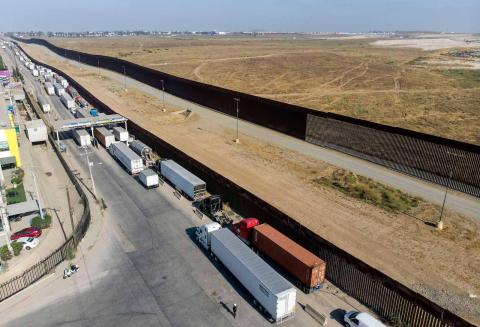International capital flows present serious policy challenges. In textbook economics, such flows are unambiguously beneficial. But volatile flows were a key cause of the 1997 Asian crisis, cross-country financial linkages exacerbated the 2008 global crisis, and capital flows were once again central in the 2010 Greek crisis. There has been substantial shrinkage of financial flows since 2008 – the McKinsey Global Institute sees these reduced flows as strengthening the benefits and reducing the risks. But the policy challenge of coping with volatility remains. The International Monetary Fund should do more to make capital-flow management a routine element in the toolbox of policymakers in emerging economies.
It's hardly surprising that the 2008 crisis changed global capital flows. In the period leading up to the crisis, the unrestrained expansion of financial balance sheets often involved complex layering of transactions with multiple institutions in different countries. These excesses have been wound back, with overextended banks retreating to their home turf and contracting their balance sheets, spurred on by fear of insolvency or by the requirements of prudential supervisors. Banks have had to raise their capital ratios substantially, which has meant abandoning non-core operations, with their foreign adventures the first to go.
McKinsey analysts, ever the optimists, see this retreat as beneficial.
These developments do not signal an end to financial globalization—although there will be risks. Rather, we see a healthy correction from pre-crisis excesses, and a return to a potentially more stable and risk-sensitive era of financial globalization.
The gross flows are now 65% below 2007. Most of the fall is in bank lending, leaving foreign direct investment (FDI) and investment in equities stronger than before, with these two components now making up 69% of flows.

The aberrant period was the 2008 crisis and the pre-crisis period. In this pre-crisis period European banks, in particular, became lenders to the world, caused a 'global banking glut' and got themselves into trouble. Flows have now returned to a more normal pace, but with FDI a much larger component. FDI has long been considered to be notably more stable than other flow components. McKinsey sees this as a more stable environment, and probably more beneficial as well: FDI brings with it technology and managerial know-how.
One of the lessons of the past two decades is that it not just the flow that can be volatile ('sudden stops'): when things go wrong, the market focus turns to the stock of liabilities – the accumulation of the flows. The stable elements (FDI and equity) account for around half the stock of foreign liabilities, so there is still plenty of room for the other volatile elements to cause problems.

For the emerging economies, the vulnerability from capital flow reversals remains a policy concern so long as a country is running a significant external deficit. In the textbook world, emerging economies should run external deficits to enable them to invest more than they save, speeding economic development. In the real world, external deficits have to be kept within whatever bounds the financial markets impose. In aggregate, the total global external deficit has shrunk since 2007, from 2.5% of global GDP to 1.7% in 2016. Not only has the composition of current flows become more stable, but the smaller deficit suggests that the global system is safer – at least in aggregate.
But even with bank lending greatly reduced, both the flow and the stock of volatile portfolio flows are still substantial. Government debt is now much larger than before 2008, and more is held by foreigners – 22% in aggregate. For countries like Indonesia, the percentage is higher still – over one third. McKinsey understands the ongoing vulnerabilities:
However, risks remain. Gross capital flows—particularly cross-border lending—remain volatile. Since 2010, in any given year one-third of developing and two-thirds of advanced economies experience a large decline or surge in total capital inflows. The median change is equivalent to 6.7 percent of GDP for developing countries and 10.8 percent for advanced economies. These fluctuations create large swings in exchange rates and could reduce macroeconomic stability. Cross-border lending is particularly volatile. Over the past five years, more than 60 percent of developing countries and over 70 percent of advanced economies experienced a large decline, surge, reversal, or recovery in cross-border lending each year, making volatility the norm rather than the exception. New tools to cope with volatility are needed.
The IMF, previously a vocal advocate of unrestricted free capital flows, has now accepted that these flows create vulnerabilities. The IMF even accepts that capital-flow management (the acceptable term for what used to be condemned as 'capital controls') may be appropriate in some circumstances. But this possibility is right at the bottom of the policy toolbox, and there is no discussion how it would be applied in practice. The implication is that such measures still don't have a full endorsement by the IMF, and hence will be seen by financial markets as a measure of policy weakness. It's time for the IMF to develop some operational guidelines for capital-flow management for emerging economies and promote them as a normal element of good policy-making.

